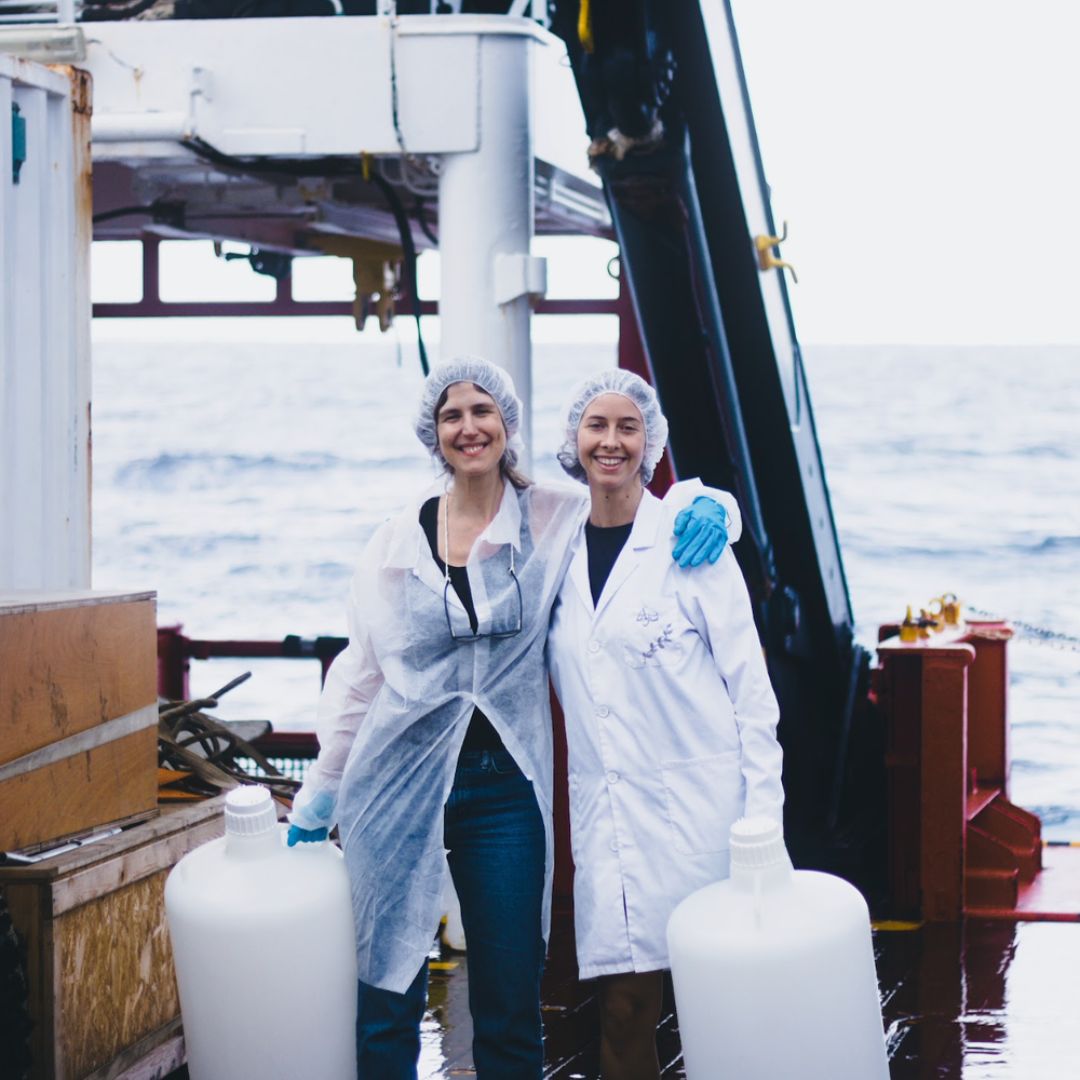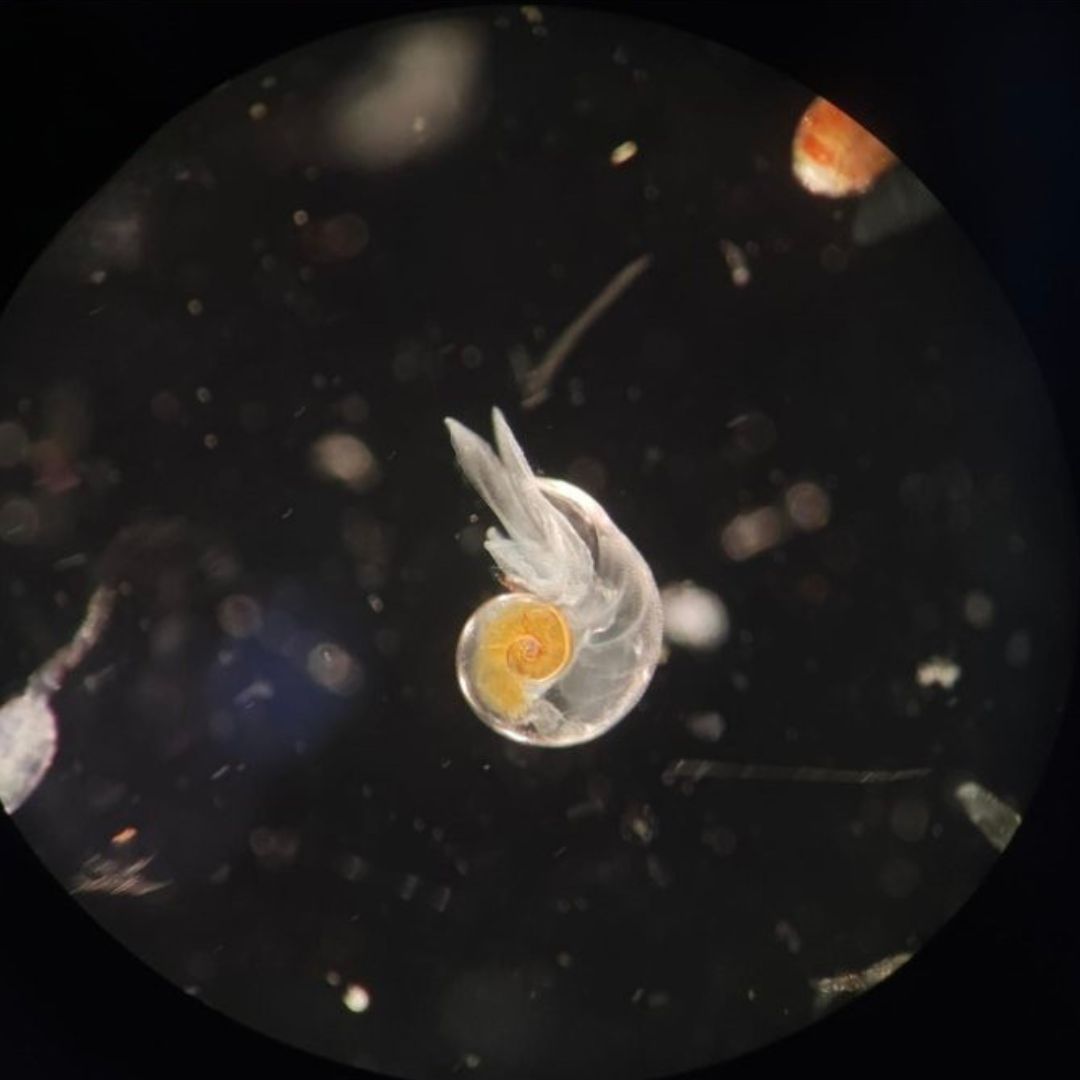CHASE and OceanICU: A scientific journey to unlock the secrets of carbon in the ocean
MARE researcher Catarina Guerreiro recently took part in the main oceanographic campaign of the European project OceanICU - Improving Carbon Understanding, an ambitious initiative funded by the Horizon Europe program and led by the Norwegian research center NORCE. The scientific expedition took place on board the research vessel RV Sarmiento de Gamboa, sailing from Walvis Bay, off the coast of Namibia, to Las Palmas de Gran Canaria, crossing the Eastern Atlantic. 
The mission's main objective was to investigate how different ocean processes - such as the sedimentation of particles, the vertical migration of plankton and the mixing of the water column - contribute to the natural sequestration of carbon, through so-called ocean carbon pumps. These “pumps” play an essential role in regulating the climate by capturing carbon from the atmosphere and storing it in the ocean depths for long periods.
One of the highlights of the campaign was the study of the influence of atmospheric dust deposition from the Sahara and Namib deserts on marine biological productivity and carbon biogeochemical cycles. It is precisely in this ocean-atmosphere interface that the work coordinated by Catarina Guerreiro, whose participation was central to the study of the Carbonate Pump, one of the key mechanisms of carbon transport in the ocean, fits in.
Catarina led the sampling operations dedicated to the study of calcifying organisms - such as coccolithophores, her main area of research - which produce calcium carbonate shells (CaCO₃). As these shells sink, they contribute to the transfer of carbon from the surface to the marine depths. Samples of seawater were taken to analyze coccolithophores, particulate inorganic carbon and phytoplankton pigments, as well as samples of calcifying zooplankton using plankton nets.

In addition, the researcher collaborated in a series of fertilization experiments with atmospheric dust, developed jointly with IOCAG (Institute of Oceanography and Global Change, University of Las Palmas de Gran Canaria) and doctoral student Aja Trebec. These experiments tested the effects of different modes of dust deposition (dry and wet) on natural phytoplankton communities, using microcosms of water collected in three different regions of the tropical Atlantic (South, Equatorial and North).
On board, the campaign involved researchers from institutions of excellence and master's students of various nationalities, promoting a collaborative environment and scientific training. The collection of atmospheric, chemical and biological data was designed to be integrated into a multi-parameter analysis, which will allow a better understanding of how regional variability and the influence of dust affect the ocean's role as a carbon sink.
In addition to scientific research, the expedition offered participants a unique experience in the middle of the ocean, including crossing the Equator - celebrated with the traditional “Equatorial Baptism” - and passing through the Intertropical Convergence Zone, where changes in atmospheric and oceanic conditions were felt in a striking way.
As a whole, the OceanICU campaign represents a significant step forward in deepening our knowledge of the global carbon cycle and improving climate models. The work carried out by Catarina Guerreiro and the other members of the team will contribute to a more precise understanding of the role of calcifying marine organisms in climate regulation and to the development of more effective strategies for monitoring and mitigating climate change.
To find out more click HERE
Photos by Catarina Guerreiro/ CHASE
Written by Catarina Guerreiro and Patrícia Carvalho
